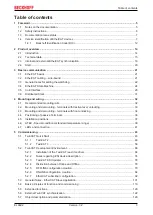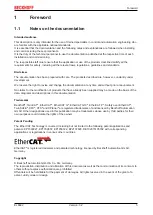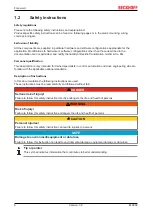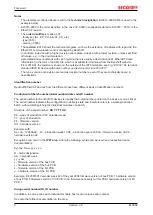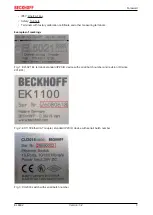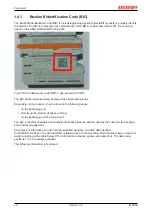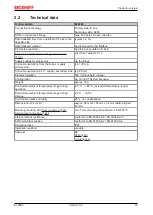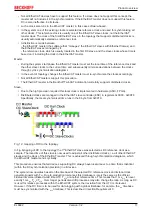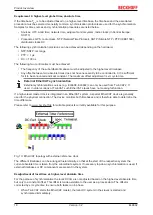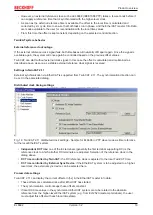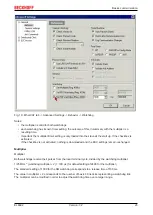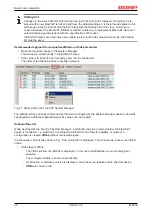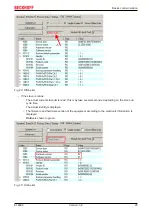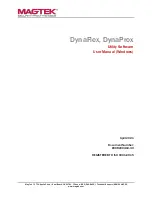
Product overview
EL6692
16
Version: 3.2
2.3
Internal and external EtherCAT synchronization
In a machine control with distributed components (I/O, drives, several masters) it may be useful for the
components to operate with a close time link to each other. The components must therefore have a local
“time”, to which the component (e.g. an I/O terminal) has access at all times.
Associated requirements may include:
1. Several outputs in a control system have to be set simultaneously, irrespective of when the respective
station receives the output data.
2. Drives/axes in a control system must read their axis positions synchronized, irrespective of the topol-
ogy or cycle time.
Both requirements necessitate a synchronization mechanism between the local times of the compo-
nents of a control system.
3. If inputs affect the control system, the (absolute) time must be recorded. This can be helpful for subse-
quent analysis, if such an analysis is required for determining the sequence of events in functional
chains.
This means that time running in the components must be coupled to a globally valid time, e.g. Green-
wich world time or a network clock.
4. tasks on different controllers should run synchronous and without phase shift.
The terms “close temporal reference” or “simultaneous” can be interpreted depending on requirements: for a
“simultaneity” in the 10 ms range a serial communication structure may be adequate, while in other ranges
100 ns or less are required.
Fig. 11: Simple I/O topology
Fig.
Simple I/O topology
shows a simple EtherCAT topology consisting of a master, several I/Os and an axis.
A local time is to be applied in different components. The tasks
- synchronization of local clocks
- coupling to a higher-level reference time
- task synchronization
are discussed below.
Requirement 1 + 2: synchronization
In an EtherCAT system the distributed clocks concept (DC) is used for synchronization of local clocks in the
EtherCAT components. Further information can be found in the separate documentation.
Synchronization of local EtherCAT devices
General:
• 1 ns time resolution corresponds to 1 digit, scope of 64 bits corresponds to approx. 584 years
• The EtherCAT master must keep the distributed clocks synchronous within the system accuracy
(EtherCAT: <100 ns) using synchronization datagrams.


